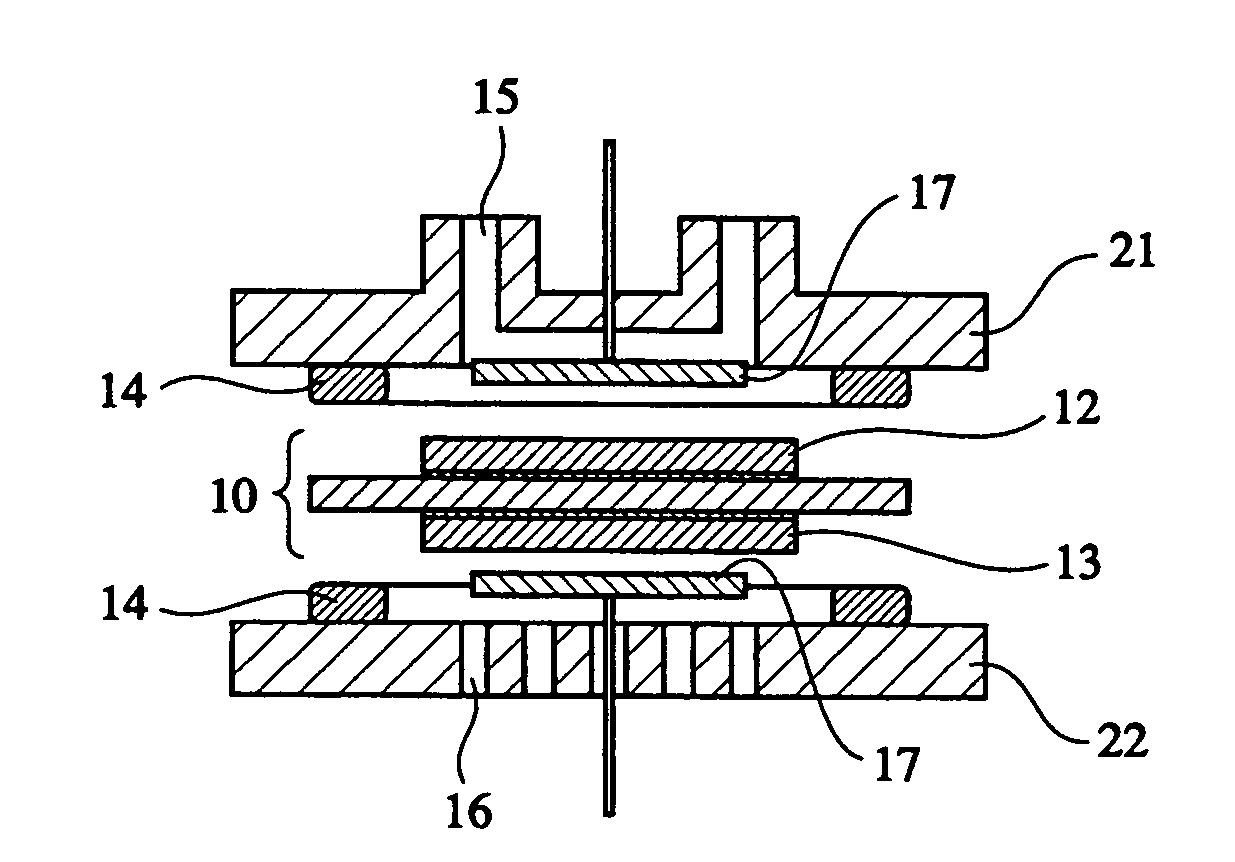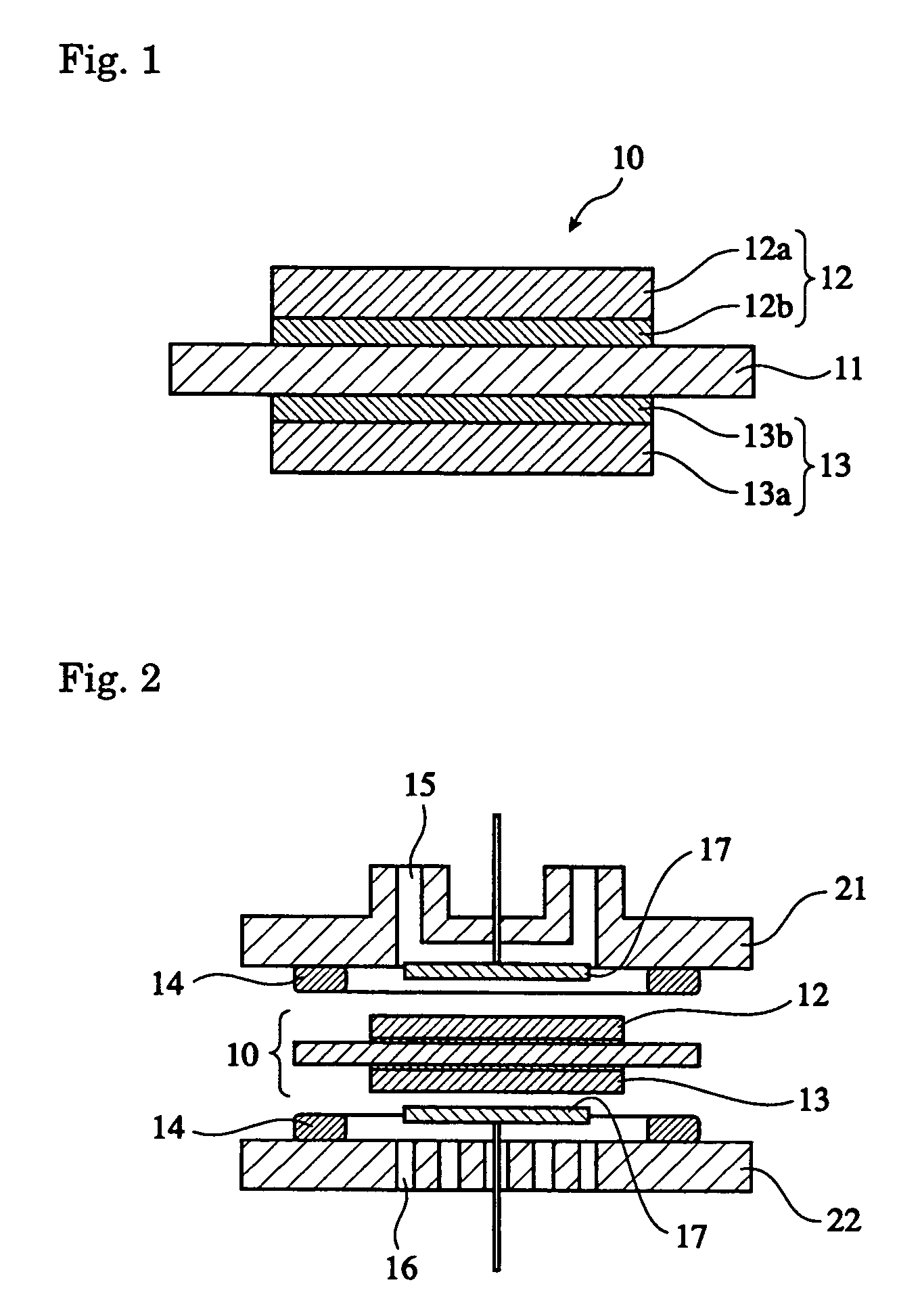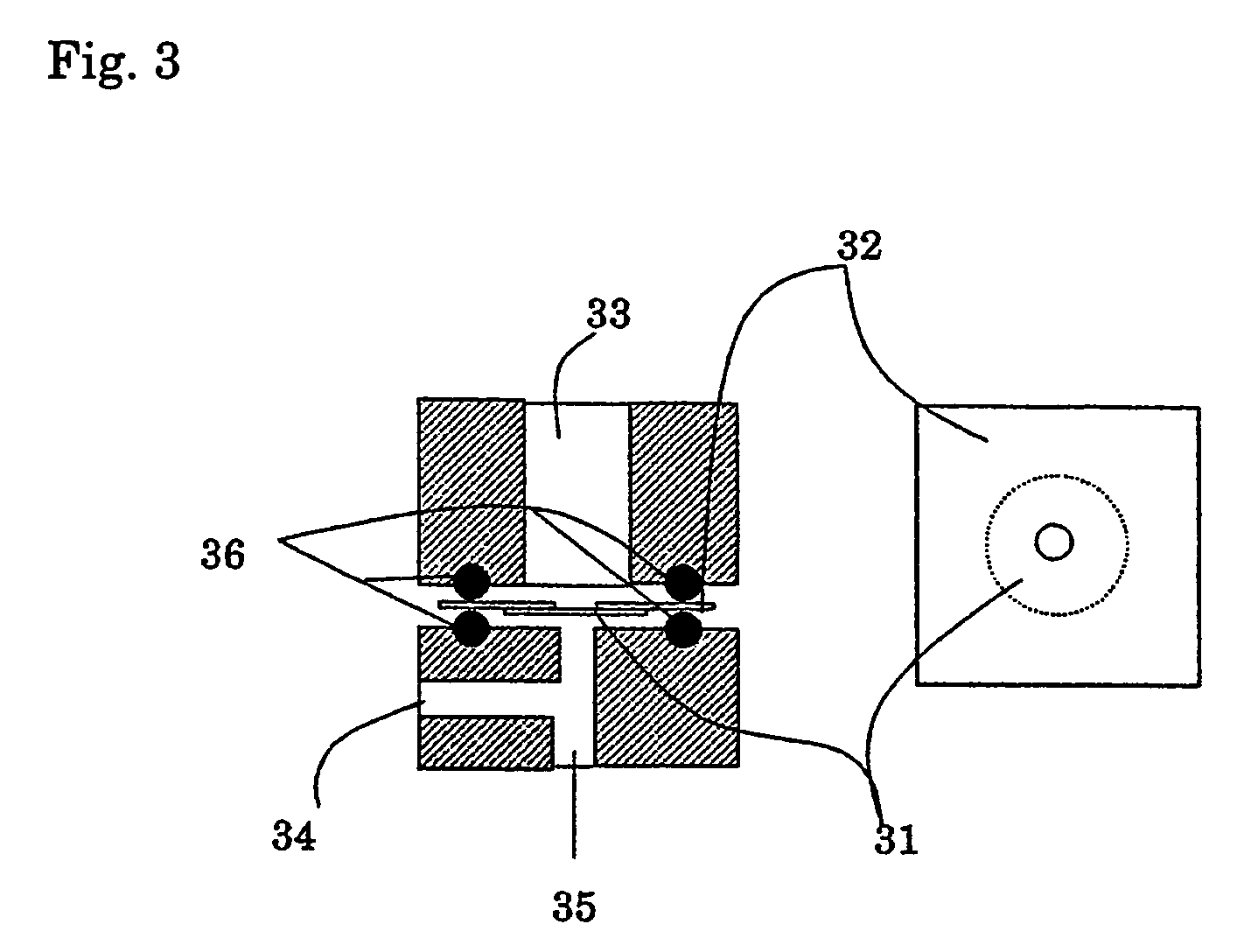Silica sol composition, membrane electrode assembly with proton-exchange membrane, and fuel cell
a technology of proton-exchange membrane and composition, which is applied in the direction of non-aqueous electrolyte cells, non-metal conductors, cell components, etc., can solve the problems of low water content of the electrolytic membrane in the cell, the inability to obtain expected cell characteristics, and the reduction in ionic conductivity. , to achieve the effect of stable silica sol and low methanol perviousness
- Summary
- Abstract
- Description
- Claims
- Application Information
AI Technical Summary
Benefits of technology
Problems solved by technology
Method used
Image
Examples
example 1
(1) Preparation of Silica Sol Composition from Precursor (T-3):
[0178]3.22 g of a precursor (T-3) was dissolved in 10.3 g of methanol, to which was added 5 g of aqueous 30% hydrogen peroxide. The resulting mixture was stirred at room temperature for 24 hours, and then subjected to NMR, which confirmed the absence of —SH from the precursor (T-3) and the presence of —SO3H in the thus-processed compound. Thus prepared, the sol (SOL-1) was colorless transparent, and was stable for 10 days (not gelled but kept homogeneous) in a cold and dark place (5° C.).
(2) Preparation of Silica Sol Composition from Precursor (T-1):
[0179]2.94 g of a precursor (T-1) was dissolved in9.0 g of methanol, to which was added 6 g of aqueous 30% hydrogen peroxide. The resulting mixture was stirred at room temperature for 24 hours, and then subjected to NMR, which confirmed the absence of —SH from the precursor (T-1) and the presence of —SO3H in the thus-processed compound. Thus prepared, the sol (SOL-2) was colo...
example 2
[0192]Organosilicon compounds S-1, S-10 and S-13 were produced according to the reaction schemes 1 to 3 mentioned below.
(1) Production of S-1:
[0193]
(1-1) Production of Intermediate M-2:
[0194]P-(trans-4-pentylcyclohexyl)phenol (M-1, by Kanto Chemical) (24.6 g, 100 mmols) was dissolved in 100 ml of DMF, and 25 g of potassium carbonate was added thereto. With stirring under heat at 80° C., 11-bromo-1-undecene (24.5 g, 105 mmols) was dropwise added thereto over a period of 10 minutes. Further stirred under heat for 3 hours, the reaction mixture was poured into 300 ml of water, and the crystal formed was collected. The crude crystal thus obtained was recrystallized from methanol, and 36.4 g of M-2 was obtained.
(1-2) Production of S-1:
[0195]The intermediate M-2 (3.99 g, 10 mmols) and triethoxysilane (1.8 g, 11 mmols) were dissolved in toluene in a reactor, which was then purged with nitrogen. The reaction liquid was kept at 80° C., and chloroauric acid (5 mg) was added thereto and heated ...
example 3
(1) Formation of Proton-exchange Membrane (E-1):
1. Formation of Proton-exchange Membranes:
[0215]T-3 (1.94 g) was dissolved in methanol (6.2 g), to which was added aqueous 30% hydrogen peroxide (2 g). The resulting mixture was stirred at room temperature for 24 hours and then subjected to NMR, which confirmed the absence of —SH from T-3 and the presence of —SO3H in the thus-processed compound. Thus prepared, the sol (SOL-1) was colorless transparent, and was stable for 5 days while kept in a cold and dark place (5° C.).
[0216]SOL-1 (1.1 g) and xylene (0.2 ml) were added to a solution of S-13 (0.4 g) dissolved in 2,2,3,3-tetrafluoro-1-propanol (1.2 ml), and stirred under heat at 50° C. for 3 hours. The resulting mixture was cast over a polyimide film (Upilex-75S by Ube Kosan), and dried at room temperature for 24 hours. Thus solidified, this was peeled away from the polyimide film to obtain a white membrane having a thickness of 110 μm. Through observation with a polarizing microscope,...
PUM
 Login to View More
Login to View More Abstract
Description
Claims
Application Information
 Login to View More
Login to View More - R&D
- Intellectual Property
- Life Sciences
- Materials
- Tech Scout
- Unparalleled Data Quality
- Higher Quality Content
- 60% Fewer Hallucinations
Browse by: Latest US Patents, China's latest patents, Technical Efficacy Thesaurus, Application Domain, Technology Topic, Popular Technical Reports.
© 2025 PatSnap. All rights reserved.Legal|Privacy policy|Modern Slavery Act Transparency Statement|Sitemap|About US| Contact US: help@patsnap.com



